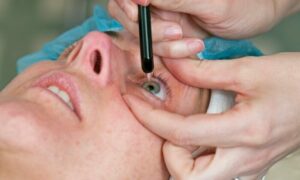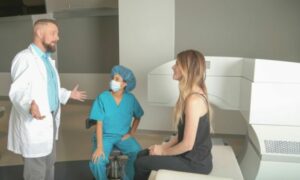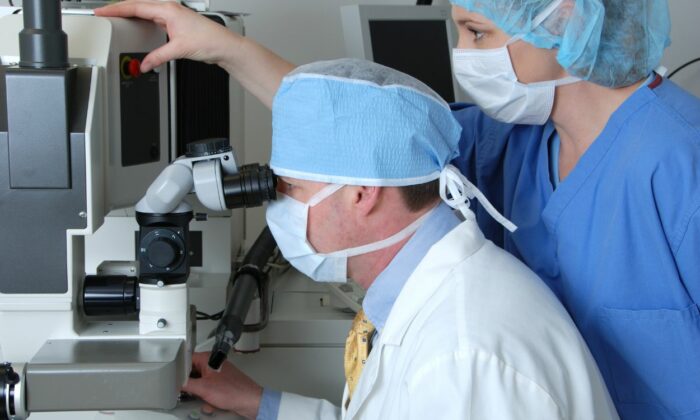When it comes to the realm of medical advancements, myths and misconceptions abound, and LASIK surgery is no stranger to the mythology that surrounds contemporary medical procedures. From whispers of excruciating pain to exaggerated tales of prohibitive costs, the rumors swirling around LASIK surgery have clouded the truth behind this life-changing procedure.
But what if we told you that the road to crystal clear vision doesn’t have to be paved with fear and misinformation? In this comprehensive guide, we are here to debunk the most common myths surrounding LASIK surgery, shedding light on the true nature of this revolutionary procedure. So, let’s uncover the reality behind LASIK surgery, one myth at a time.
Debunking Common Myths About LASIK Surgery
The surge of myths surrounding LASIK surgery can sometimes overshadow the remarkable advancements that this field has witnessed over the years. From enhanced laser precision to reduced recovery times, the LASIK of today is far removed from its early days. It is essential, therefore, to separate the wheat from the chaff and discern fact from fiction.
So now, let’s dismantle the common misconceptions one by one, offering you a clearer picture of what LASIK surgery genuinely entails.
Myth 1: LASIK Surgery is Painful
 One of the most pervasive myths regarding LASIK surgery is that it is a painful process. This couldn’t be further from the truth, and it’s high time to lay this misconception to rest.
One of the most pervasive myths regarding LASIK surgery is that it is a painful process. This couldn’t be further from the truth, and it’s high time to lay this misconception to rest.
During LASIK surgery, the foremost priority of the surgeon is to ensure the comfort and tranquillity of the patient. Before the surgery even begins, numbing eye drops are administered to completely desensitize the eye region, effectively ensuring a pain-free experience. These eye drops are highly potent anesthetics that block pain receptors, meaning that throughout the procedure, you won’t feel any discomfort.
Moreover, the actual LASIK procedure is incredibly swift, typically taking about 5 to 10 minutes per eye. The sophisticated laser technology involved is programmed to work with utmost precision, avoiding any areas that might cause discomfort.
During the operation, you may experience a slight pressure sensation or a mild discomfort at most, but calling it painful would be a gross exaggeration.
In essence, the myth that LASIK surgery is painful is nothing more than a relic of past surgical procedures. With the advancements in technology and anesthesia, you can now comfortably look forward to a life with enhanced vision without fearing pain.
Myth 2: LASIK is not Effective for Correcting Cylindrical Numbers
 This particular myth has been floating around for quite a while, often discouraging individuals with astigmatism or cylindrical number issues from considering LASIK as a viable option for vision correction. Let’s dissect this myth and look at the factual aspects.
This particular myth has been floating around for quite a while, often discouraging individuals with astigmatism or cylindrical number issues from considering LASIK as a viable option for vision correction. Let’s dissect this myth and look at the factual aspects.
Coming to the capability of LASIK surgery, it is crucial to note that LASIK has evolved significantly since its initial years. Today, it is highly equipped to correct not only myopia (nearsightedness) and hyperopia (farsightedness) but also astigmatism.
Modern LASIK procedures utilize advanced technology to reshape the cornea more evenly, thus effectively reducing or completely eliminating the cylindrical number.
During a LASIK surgery, the surgeon uses a highly precise laser to make meticulous adjustments to the cornea, targeting the specific areas causing the vision irregularity. So, dispelling the myth, LASIK can indeed be a viable and effective solution for those with cylindrical numbers, offering them a gateway to a life with clearer vision and reduced dependency on glasses or contact lenses.
Myth 3: The LASIK Flap Never Heals Completely
 It’s not uncommon to come across misinformation stating that the LASIK flap never fully heals, leaving a persistent vulnerability in the eye. This can understandably generate fear and apprehension about the procedure. However, it is essential to separate facts from myths when considering LASIK surgery.
It’s not uncommon to come across misinformation stating that the LASIK flap never fully heals, leaving a persistent vulnerability in the eye. This can understandably generate fear and apprehension about the procedure. However, it is essential to separate facts from myths when considering LASIK surgery.
- First and foremost, the claim that the LASIK flap never heals completely is not accurate. While it is true that the initial healing phase post-surgery demands utmost care to prevent any flap complications, this doesn’t mean that the flap remains permanently fragile.
- By about four weeks post-surgery, the flap heals substantially, regaining a significant amount of its original strength. During this period, the cells of the cornea work diligently to mend and reestablish a strong bond with the underlying layers. It is at this point that most individuals can comfortably engage in most of their regular activities without a high risk of flap-related complications.
Therefore, while caution is advised during the initial recovery phase, patients can be assured that with time and proper post-operative care, the LASIK flap heals completely, paving the way for a stable, long-term improvement in vision.
Myth 4: LASIK Surgery Can Permanently Cause Dry Eyes
 Dry eyes post-LASIK surgery is a topic that often surfaces in conversations and forums, painting a picture of perpetual discomfort. It’s essential to dissect this claim and understand the truth behind it to make an informed decision about undergoing LASIK surgery.
Dry eyes post-LASIK surgery is a topic that often surfaces in conversations and forums, painting a picture of perpetual discomfort. It’s essential to dissect this claim and understand the truth behind it to make an informed decision about undergoing LASIK surgery.
Firstly, it’s necessary to acknowledge that experiencing dry eyes can indeed be a side effect of LASIK surgery. Therefore, it’s vital to note that this condition is often temporary, not a permanent ordeal as it is frequently purported to be.
The majority of individuals who experience dry eyes post-surgery see a substantial improvement in the first three to six months following the procedure. As the eyes heal, the corneal nerves start to regenerate, gradually restoring the eyes’ natural ability to produce tears and maintain a comfortable level of moisture.
So, while there is a possibility of experiencing dry eyes post-LASIK, it is generally a temporary phase in the healing process, not a permanent condition. Remember, don’t let myths cloud your judgment; instead, rely on accurate information and expert advice to make your decision.
Myth 5: LASIK is Not Safe
 Another prevailing myth surrounding LASIK surgery is its supposed lack of safety. This perception strays significantly from the truth, particularly considering the steady advancements in technology and surgical techniques adopted over the years.
Another prevailing myth surrounding LASIK surgery is its supposed lack of safety. This perception strays significantly from the truth, particularly considering the steady advancements in technology and surgical techniques adopted over the years.
To begin with, LASIK is one of the most extensively studied elective surgical procedures in the world. According to reliable data, the success rate of LASIK surgeries is astoundingly high, with around 96% of patients achieving the desired level of vision correction. This high success rate is a clear indicator of the procedure’s safety.
The modern LASIK procedure employs the use of advanced laser technology, which ensures a blade-free and minimally invasive surgery. These lasers are incredibly precise, reducing the risks associated with human error and making the procedure safer than ever.
It’s also noteworthy to mention that millions of people worldwide have successfully undergone LASIK surgery, resuming their normal lives with significantly improved vision and without experiencing any serious adverse effects.
Therefore, the claim “LASIK is not safe” stands as an unfounded myth, contradicted by a plethora of positive data and testimonials from satisfied patients. In the current era, LASIK stands as a highly safe and effective solution for a wide range of vision problems, facilitating a spectacle-free and improved quality of life.
Myth 6: LASIK is Too Expensive
 In a world where quality often comes with a hefty price tag, many people assume that a transformative procedure like LASIK would be too expensive to even consider. It’s time to shed light on this misconception and reveal the real financial aspect of LASIK surgery.
In a world where quality often comes with a hefty price tag, many people assume that a transformative procedure like LASIK would be too expensive to even consider. It’s time to shed light on this misconception and reveal the real financial aspect of LASIK surgery.
At first glance, the upfront cost of LASIK surgery might seem significant, and it’s true that this advanced procedure comes with a price. However, when we delve deeper into the finances associated with maintaining corrective lenses over the years, a different picture emerges.
- First, consider the cumulative cost of glasses or contact lenses, including the frames, lenses, cleaning solutions, and regular updates to your prescription as your eyes change over time. These costs, incurred year after year, can swiftly add up, potentially surpassing the one-time cost of LASIK surgery in the long run.
- Furthermore, many LASIK centers offer flexible financing options and payment plans to make the procedure more accessible to a broader segment of the population.
- This perception strays significantly from the truth, particularly considering the steady advancements in technology and surgical techniques adopted over the years.This perception strays significantly from the truth, particularly considering the steady advancements in technology and surgical techniques adopted over the years. The freedom from glasses and contact lenses, and the convenience it bring to your daily life – all contribute to an enriched life experience, which arguably, is priceless.
- It’s also pertinent to note that LASIK surgery might be eligible for payment through Flexible Spending Accounts (FSAs) or Health Savings Accounts (HSAs), which can further alleviate the financial burden.
Therefore, instead of dismissing LASIK surgery as too expensive, it’s more prudent to evaluate it as a long-term investment in your well-being and quality of life.
Conclusion
The journey to a glasses-free life should not be marred by unfounded fears and misinformation. As prospective candidates for LASIK surgery, arm yourself with the correct information, dispelling myths and understanding the true potential of what modern medical science has to offer.
Whether it’s concerns about the procedure being painful, questions about its safety, or worries about the costs involved, remember that knowledgeable consultation is your ally. And now, the path to a brighter, clearer tomorrow is just a phone call away. Experience the revolutionary transformation that LASIK surgery can bring into your life.
Are you looking for Lasik surgery? Experience the freedom of clear vision with Lasik Surgery at EyeMantra. Book your free appointment now at 9711116605.



